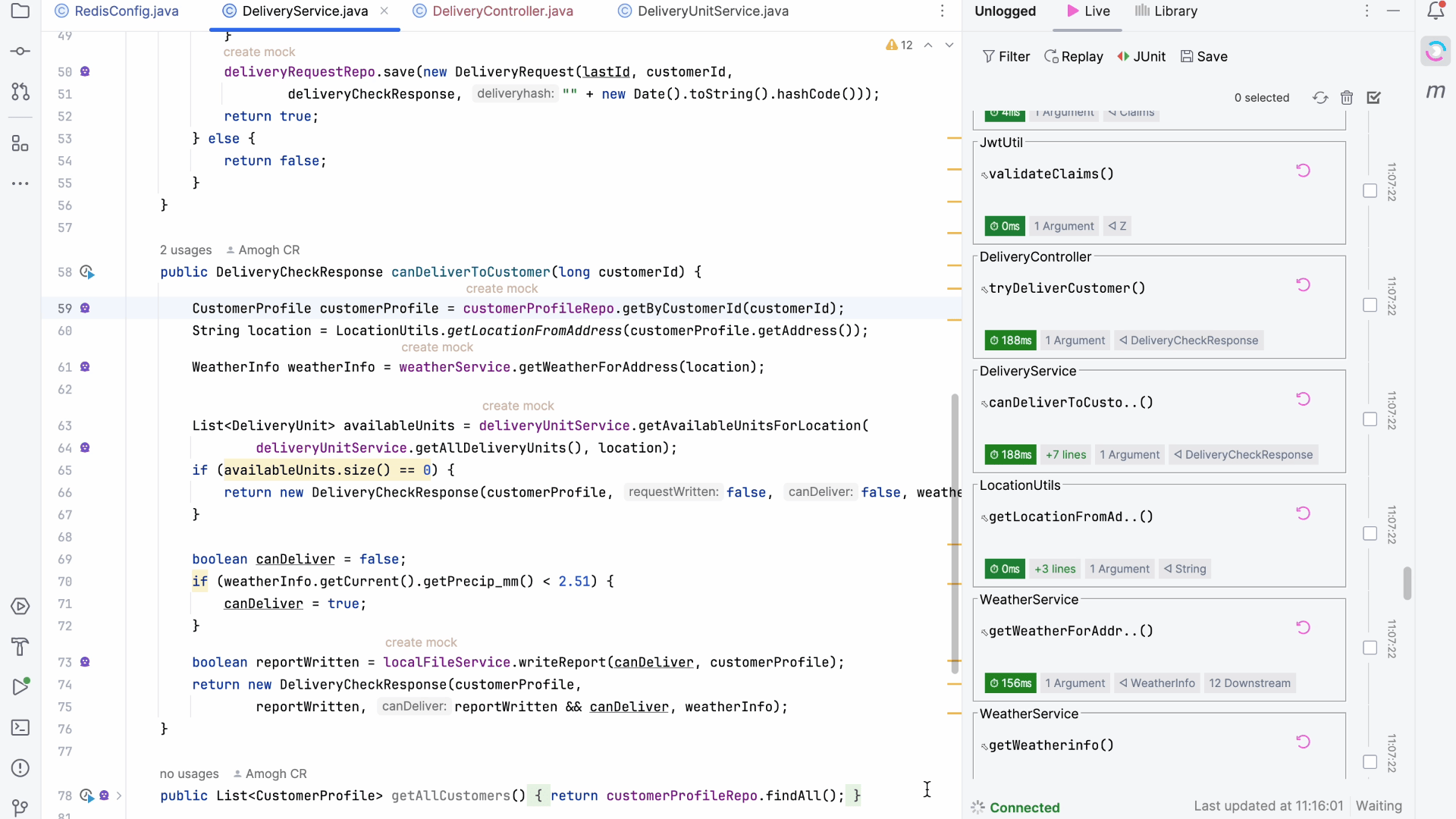Saving and running the Replays
You can save the replays and git push them to your repo so that your team mates can start using the replay tests you created.
Types of Replays
You can save and run the replays either in unit mode or integration mode. In unit mode, all the mocks inside a method are automatically saved and mapped with the replay.
In integration mode, no mocks are applied.
Assertions
When you click on save, we save them with one on one key value assertions. You can edit them later from library.
Mocks
All the mocks needed for the replays are stored and mapped automatically to the replays.
Replays and mockd with assertions are saved at the below location
/YOUR MODULE DIRECTORY/src/test/resources/unlogged

How to run the Replays in CI?
While running the replay tests locally is important during development for rapid feedback, using a CI pipeline enhances the overall development process by automating the testing and validation steps in a controlled and scalable environment. It ensures that the codebase is reliable and meets quality standards before changes are pushed to production.
Adding the dependency
Replays like unit tests
Start by creating the following test class file UnloggedTest.java in your src/test/java directory
import io.unlogged.runner.UnloggedTestRunner;
import org.junit.runner.RunWith;
@RunWith(UnloggedTestRunner.class)
public class UnloggedTest {
}
and then run this simple command.
For Replay cases to be picked up from CLI you will need to add the following extra dependencies.
Tip
Yep! This class has no methods since the replay tests will be based on src/test/resources/unlogged/<ClassName>.json files.
Integration testing on Springboot application
For Springboot applications, customize the above tests as follows:
@RunWith(UnloggedTestRunner.class)
@ComponentScan("<spring.application.package.name>")
@EnableAutoConfiguration
@PropertySource(
value = {"config/application.yml", "config/application-dev.yml"},
factory = UnloggedRunnerTest.YamlPropertySourceFactory.class)
@TestPropertySource({"classpath:application.properties"})
@WebAppConfiguration
public class UnloggedRunnerTest {
public static class YamlPropertySourceFactory implements PropertySourceFactory {
public YamlPropertySourceFactory() {
}
@Override
public PropertiesPropertySource createPropertySource(String name, EncodedResource encodedResource) throws IOException {
YamlPropertiesFactoryBean factory = new YamlPropertiesFactoryBean();
factory.setResources(encodedResource.getResource());
return new PropertiesPropertySource(encodedResource.getResource().getFilename(), factory.getObject());
}
}
}
Remember!
Remember to update <spring.application.package.name> to your package name, config/application-dev.yml to the config files you want to use. UnloggedRunnerTest.YamlPropertySourceFactory.class is for supporting yml files. Specify your test application properties inside ApplicationProperties.class.
WebAppConfiguration annotation is needed if there are any methods in starting class of the project that configure services, that cannot be enabled for integration tests. For example some configuration for Swagger or API monitoring. If these configurations are in a seperate file, then the annotation is not needed.
With this, unlogged test runner will create as instance of the spring application context and execute the tests based on the beans created by spring.
Test and Coverage Reports for Replays
Popular Test reports like surefire and Coverage reports like JaCoCo will pick up Replay cases readily.
mvn test or gradle test or any commands to trigger reports will automatically include Replay cases as long as they are executed.
